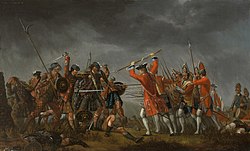"The British Grenadiers" is a traditional marching song of British and Commonwealth military units whose badge of identification features a grenade, the tune of which dates from the 17th century. It is the regimental quick march of the Royal Artillery (since 1716), the Corps of Royal Engineers (since 1787), the Honourable Artillery Company (since 1716), the Grenadier Guards (since 1763), and the Royal Regiment of Fusiliers (since 1763). It is also an authorized march of the Royal Australian Artillery, the Royal Gibraltar Regiment, the Royal Regiment of Canadian Artillery, the Canadian Grenadier Guards, the Royal Regiment of Canada, and the Princess Louise Fusiliers. The standard orchestration for the military band was approved in 1762, when the Royal Artillery Band (initiated in 1557) became recognized officially, [1] and for all other "grenade" regiments in 1763, when the remaining unofficial bands gained official status.


